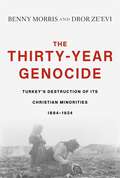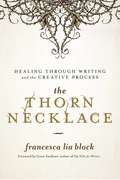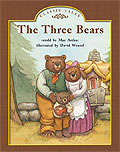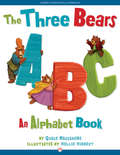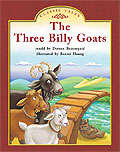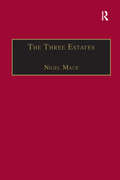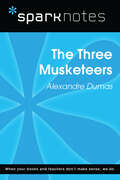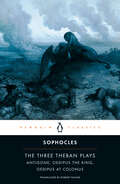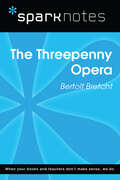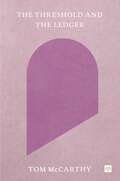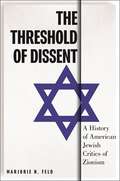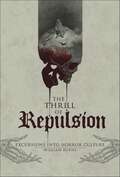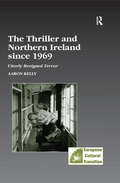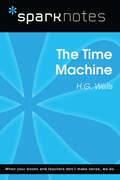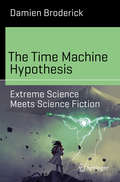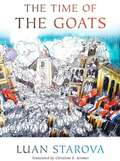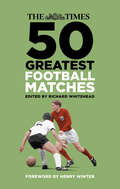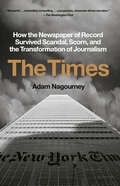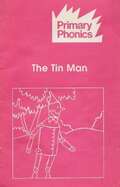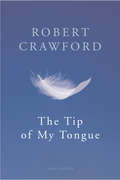- Table View
- List View
The Thirty-Year Genocide: Turkey’s Destruction of Its Christian Minorities, 1894–1924
by Benny Morris Dror Ze’eviFrom 1894 to 1924 three waves of violence swept across Anatolia, targeting the region’s Christian minorities. Benny Morris and Dror Ze’evi’s impeccably researched account is the first to show that the three were actually part of a single, continuing, and intentional effort to wipe out Anatolia’s Christian population and create a pure Muslim nation.
The Thorn Necklace: Healing Through Writing and the Creative Process
by Francesca Lia Block Grant FaulknerFor devotees of Bird by Bird and The Artist's Way, a memoir-driven guide to healing through the craft of writingFrancesca Lia Block is the bestselling author of more than twenty-five books, including the award-winning Weetzie Bat series. Her writing has been called "transcendent" by The New York Times, and her books have been included in "best of" lists compiled by Time magazine and NPR. In this long-anticipated guide to the craft of writing, Block offers an intimate glimpse of an artist at work and a detailed guide to help readers channel their own experiences and creative energy. Sharing visceral insights and powerful exercises, she gently guides us down the write-to-heal path, revealing at each turn the intrinsic value of channeling our experiences onto the page. Named for the painting by Frida Kahlo, who famously transformed her own personal suffering into art, The Thorn Necklace offers lessons on life, love, and the creative process.
The Thought of Nirad C. Chaudhuri
by Ian AlmondIn this critical examination of the famous South Asian thinker Nirad C. Chaudhuri (1897–1999), a notorious Anglophile and defender of Empire, Ian Almond analyses the factors that played a role in the evolution of his thought. Almond explores how Empire creates 'native informants', enabling local subjects to alienate themselves from and even abhor their own cultures. Through analysis of Chaudhuri's views on Islam, his use of the archive, moments of melancholy and loss in his writing, and his opinions on Empire, Almond dissects the constitution of an Indian writer and locates the precise ways in which Chaudhuri was able to produce the kind of discourses he did, exploring how conservative, pro-Western intellectuals are formed in postcolonial environments. A strong comparative element places Chaudhuri's views in the context of conservative intellectuals from Latin America, the Middle East and South Asia, concluding with a consideration of present-day 'native informants' from these regions.
The Thousand and One Nights: Space, Travel and Transformation (Routledge Studies in Middle Eastern Literatures)
by Richard van LeeuwenThis volume discusses The Thousand and One Nights' themes of space and travel showing how they are used not only as a setting in which the story unfolds, but also as the dynamic force which propels the heroes and the story to the final dénouement. These events often symbolize a process of transformation, in which the hero has to search for his destined role or strive to attain the object of his desire. In this way, themes of travel are the narrative backbone of stories of various genres including love, religion, magic and adventure. This book not only gives a fresh approach to many stories of the collection, but also proposes new insights in the nature of The Thousand and one Nights as a self-reflexive narrative and is essential reading for scholars of Arabic literature.
The Three Bears (Fountas & Pinnell LLI Green #Level E, Lesson 51)
by May ArthurFountas and Pinnell Leveled Literacy Intervention Green System -- 1st Grade
The Three Bears ABC
by Grace Maccarone Hollie Hibbert"F is for Forest. While their porridge cooled, the bears walked in the forest, where they sniffed fragrant flowers." The classic tale of Goldilocks and the Three Bears meets the alphabet in this fairy-tale-meets-concept-book story. Grace Maccarone cleverly alliterates Goldilocks's tale from A to Z.
The Three Billy Goats (Fountas & Pinnell LLI Green #Level J, Lesson 107)
by Doreen BeauregardFountas and Pinnell Leveled Literacy Intervention Green System -- 1st Grade
The Three Estates: A Pleasant Satire in Commendation of Virtue and in Vituperation of Vice
by Nigel MaceThis is the first ever English translation of Sir David Lindsay’s masterpiece of 16th-century Scottish political theatre, Ane Pleasant Satyre of the Thrie Estaitis in Commendatioun of Vertew and Vituperatioune of Vyce. The work’s importance lies in its status as a well-known piece of national literature, and as a historical document of interest to historians of Scottish and European court politics.The verse translation available here is of over 3,000 lines, in an edition which combines a historical and critical introduction with the possibilities of modern performance. Besides issues of text and translation, the introduction examines the background of Scotland in 1552, the author and his audience, the play’s performance history and its position as a Renaissance text. A work on a grand scale with a cast of over 40, the play confronts and resolves the ill-counselled, misrule of young King Humanity through the intervention, not only of King Correction and of learned contemporaries, but also through the fearless condemnations of the Poor Man and the political resolution of John The Common Weal. Its conclusions are humanly centred, popularly representative and yet strikingly realistic. They, and their manner of expression, make an ideal object for the study of a society poised between the pluralism of the Renaissance and the rigour of the Reformation.
The Three Musketeers (SparkNotes Literature Guide Series)
by SparkNotesThe Three Musketeers (SparkNotes Literature Guide) by Alexandre Dumas Making the reading experience fun! Created by Harvard students for students everywhere, SparkNotes is a new breed of study guide: smarter, better, faster. Geared to what today's students need to know, SparkNotes provides: *Chapter-by-chapter analysis *Explanations of key themes, motifs, and symbols *A review quiz and essay topicsLively and accessible, these guides are perfect for late-night studying and writing papers
The Three Sustainabilities: Energy, Economy, Time
by Allan StoeklBringing the word sustainability back from the brink of cliché—to a substantive, truly sustainable future Is sustainability a hopelessly vague word, with meager purpose aside from a feel-good appeal to the consumer? In The Three Sustainabilities, Allan Stoekl seeks to (re)valorize the word, for a simple reason: it is useful. Sustainability designates objects in time, their birth or genesis, their consistency, their survival, their demise. And it raises the question, as no other word does, of the role of humans in the survival of a world that is quickly disappearing—and perhaps in the genesis of another world. Stoekl considers a range of possibilities for the word, touching upon questions of object ontology, psychoanalysis, urban critique, technocracy, and religion. He argues that there are three varieties of sustainability, seen from philosophical, cultural, and economic perspectives. One involves the self-sustaining world &“without us&”; another, the world under our control, which can run the political spectrum from corporatism to Marxism to the Green New Deal; and a third that carries a social and communitarian charge, an energy of the &“universe&” affirmed through, among other things, meditation and gifting. Each of these carves out a different space in the relations between objects, humans, and their survival and degradation. Each is necessary, unavoidable, and intimately bound with, and infinitely distant from, the others.Along the way, Stoekl cites a wide range of authors, from philosophers to social thinkers, literary theorists to criminologists, anthropologists to novelists. This beautifully written, compelling, and nuanced book is a must for anyone interested in questions of ecology, energy, the environmental humanities, contemporary theories of the object, postmodern and posthuman aesthetics, or religion and the sacred in relation to community.
The Three Theban Plays: Antigone; Oedipus the King; Oedipus at Colonus
by Sophocles Bernard Knox Robert FaglesThe heroic Greek dramas that have moved theatergoers and readers since the fifth century B.C.Towering over the rest of Greek tragedy, the three plays that tell the story of the fated Theban royal family—Antigone, Oedipus the King and Oedipus at Colonus—are among the most enduring and timeless dramas ever written. Robert Fagles's authoritative and acclaimed translation conveys all of Sophocles's lucidity and power: the cut and thrust of his dialogue, his ironic edge, the surge and majesty of his choruses and, above all, the agonies and triumphs of his characters. This Penguin Classics edition features an introduction and notes by the renowned classicist Bernard Knox.For more than seventy years, Penguin has been the leading publisher of classic literature in the English-speaking world. With more than 1,700 titles, Penguin Classics represents a global bookshelf of the best works throughout history and across genres and disciplines. Readers trust the series to provide authoritative texts enhanced by introductions and notes by distinguished scholars and contemporary authors, as well as up-to-date translations by award-winning translators.
The Three Treasures: A Revised and Illustrated Study and Translation of Minamoto no Tamenori's Sanboe (Michigan Monograph Series in Japanese Studies #97)
by Edward Kamens Ethan BushelleWhen the young Princess Sonshi became a Buddhist nun in the year 984, a scholar-official of the royal court was commissioned to create a guide to the Buddhist religion that would be accessible for her. He did so in the form of the illustrated works of fiction (monogatari) that appealed to women readers of her time and class. The text has survived in later manuscripts; the illustrations, if they ever existed, have not. This revised translation recreates Sonshi’s experience of receiving this multimedia presentation, with illustrations selected to help contemporary readers visualize its content and essays that provide context on the religious and cultural experience of the author. The Three Treasures is a unique document that opens a window onto the world of Buddhist religious experience—especially for women—in high classical Japan, the time of Sei Shōnagon’s Pillow Book and Murasaki Shikibu’s Tale of Genji.
The Threepenny Opera (SparkNotes Literature Guide Series)
by SparkNotesThe Threepenny Opera (SparkNotes Literature Guide) by Bertolt Brecht Making the reading experience fun! Created by Harvard students for students everywhere, SparkNotes is a new breed of study guide: smarter, better, faster. Geared to what today's students need to know, SparkNotes provides: *Chapter-by-chapter analysis *Explanations of key themes, motifs, and symbols *A review quiz and essay topicsLively and accessible, these guides are perfect for late-night studying and writing papers
The Threshold and the Ledger
by Tom McCarthyA timely exploration of Austrian writer Ingeborg Bachmann by Booker-shortlisted author Tom McCarthy.Since her untimely death in 1973, Ingeborg Bachmann has come to be regarded as one of the twentieth century&’s most important writers. Unpacking a single Bachmann poem, novelist Tom McCarthy latches onto two of its central terms — the eponymous threshold and ledger — and takes off on a line of flight: through the work of Franz Kafka, David Lynch, Anne Carson, Sappho and Shakespeare.Can writing be understood as an experience of the threshold, a limit- or boundary- state? A condition of ecstasy or ec-stasis, standing outside of oneself? With identity ruptured and surpassed, how and by whom might such experience be recorded?Appearing on the eve of Bachmann&’s centenary year, McCarthy&’s book argues for the centrality of her vision to the very act of literature itself.
The Threshold of Dissent: A History of American Jewish Critics of Zionism (Goldstein-Goren Series in American Jewish History)
by Marjorie FeldExplores the long history of anti-Zionist and non-Zionist American JewsThroughout the twentieth century, American Jewish communal leaders projected a unified position of unconditional support for Israel, cementing it as a cornerstone of American Jewish identity. This unwavering position served to marginalize and label dissenters as antisemitic, systematically limiting the threshold of acceptable criticism. In pursuit of this forced consensus, these leaders entered Cold War alliances, distanced themselves from progressive civil rights and anti-colonial movements, and turned a blind eye to human rights abuses in Israel. In The Threshold of Dissent, Marjorie N. Feld instead shows that today’s vociferous arguments among American Jews over Israel and Zionism are but the newest chapter in a fraught history that stretches from the nineteenth century. Drawing on rich archival research and examining wide-ranging intellectual currents—from the Reform movement and the Yiddish left to anti-colonialism and Jewish feminism—Feld explores American Jewish critics of Zionism and Israel from the 1880s to the 1980s. The book argues that the tireless policing of contrary perspectives led each generation of dissenters to believe that it was the first to question unqualified support for Israel. The Threshold of Dissent positions contemporary critics within a century-long debate about the priorities of the American Jewish community, one which holds profound implications for inclusion in American Jewish communal life and for American Jews’ participation in coalitions working for justice.At a time when American Jewish support for Israel has been diminishing, The Threshold of Dissent uncovers a deeper—and deeply contested—history of intracommunal debate over Zionism among American Jews.
The Thrill of Repulsion: Excursions into Horror Culture
by William BurnsA collection of lists, reviews, and interviews about the horror genre in film and beyondIncludes categorical lists and in-depth articles covering horror movies, literature, television, graphic novels, and musicHorror is a dominant form of cultural expression in the 20th/21st centuries
The Thriller and Northern Ireland since 1969: Utterly Resigned Terror (Studies in European Cultural Transition #Vol. 28)
by Aaron KellyFor the past 30 years, the so-called 'Troubles' thriller has been the dominant fictional mode for representing Northern Ireland, leading to the charge that the crudity of this popular genre appropriately reflects the social degradation of the North. Aaron Kelly challenges both these judgments, showing that the historical questions raised by setting a thriller in Northern Ireland disrupt the conventions of the crime novel and allow for a new understanding of both the genre and the country. Two essays on crime fiction by Walter Benjamin and Berthold Brecht appear here for the first time in English translation. By demonstrating the relevance of these theorists as well as other key European thinkers such as Antonio Gramsci, Louis Althusser, and Slavoj Zizek to his interdisciplinary study of Irish culture and the crime novel, Kelly refutes the idea that Northern Ireland is a stagnate anomaly that has been bypassed by European history and remained impervious to cultural transformation. On the contrary, Kelly's examination of authors such as Jack Higgins, Tom Clancy, Gerald Seymour, Colin Bateman, and Eoin McNamee shows that profound historical change and complexity have characterized both Northern Ireland and the thriller form.
The Thurber Letters
by Harrison Kinney Rosemary A. ThurberThough he died more than forty years ago, James Thurber remains one of America's greatest and most enduring humorists, and his books -- for both adults and children -- remain as popular as ever. In this comprehensive collection of his letters -- the majority of which have never before been published -- we find unsuspected insights into his life and career. His prodigious body of work -- fables, drawings, comic essays, reportage, short stories, including his famous "The Secret Life of Walter Mitty" -- all define Thurber's special and prolific genius. Like most good humorists, he was prone to exaggeration, embellishment, and good-natured self-deprecation. In his letters we find startling revelations about who he really was, and why the prism through which he viewed the world could often be both painfully and delightfully distorting. For the first time, Thurber's daughter Rosemary has allowed the publication of many of the extremely personal letters he wrote early in his life to the women he was -- usually hopelessly -- in love with, as well as the affectionate and hilarious letters that he wrote to her. In addition, Harrison Kinney, noted Thurber biographer, has located a number of Thurber letters never before published. The Thurber Letters traces Thurber's progress from lovesick college boy to code clerk with the State Department in Paris and reporter for the Columbus Dispatch, through his marriages and love affairs, his special relationship with his daughter, his illustrious and tumultuous years with The New Yorker, his longstanding relationship with E. B. White, his close friendship with Peter De Vries, and his tragic last days. Included in the book are Thurber drawings never before published. His candid comments in these personal letters, whether lighthearted or melancholy, comprise an entertaining, captivating, informal biography -- pure, wonderful Thurber.
The Time Machine (SparkNotes Literature Guide Series)
by SparkNotesThe Time Machine (SparkNotes Literature Guide) by H.G. Wells Making the reading experience fun! Created by Harvard students for students everywhere, SparkNotes is a new breed of study guide: smarter, better, faster. Geared to what today's students need to know, SparkNotes provides: *Chapter-by-chapter analysis *Explanations of key themes, motifs, and symbols *A review quiz and essay topicsLively and accessible, these guides are perfect for late-night studying and writing papers
The Time Machine Hypothesis: Extreme Science Meets Science Fiction (Science and Fiction)
by Damien BroderickEvery age has characteristic inventions that change the world. In the 19th century it was the steam engine and the train. For the 20th, electric and gasoline power, aircraft, nuclear weapons, even ventures into space. Today, the planet is awash with electronic business, chatter and virtual-reality entertainment so brilliant that the division between real and simulated is hard to discern. But one new idea from the 19th century has failed, so far, to enter reality—time travel, using machines to turn the time dimension into a two-way highway. Will it come true, as foreseen in science fiction? Might we expect visits to and from the future, sooner than from space? That is the Time Machine Hypothesis, examined here by futurist Damien Broderick, an award-winning writer and theorist of the genre of the future. Broderick homes in on the topic through the lens of science as well as fiction, exploring some fifty different time-travel scenarios and conundrums found in the science fiction literature and film.
The Time of the Goats
by Luan StarovaIt's the late 1940s in Skopje, Yugoslavia, in the critical year leading to Tito's break with Stalin. Pushed to leave mountain villages to become the new proletariat in urban factories, a flood of peasants crowds into Skopje--and with them, all of their goats. Suffering from hunger, Skopje's citizens welcome the newcomers. But municipal leaders are faced with a dilemma when the central government issues an order calling for the slaughter of the country's goat population. With food so scarce, will they hide the outlawed animals? Or will they comply with the edict and endure the bite of hunger? The Time of the Goatsis the second novel in Luan Starova's acclaimed multivolume Balkan saga. It follows the main characters fromMy Father's Booksand the tragicomic events of their lives in Skopje as the narrator's intellectual father and the head goatherd become friends. As local officials clumsily carry out absurd policies, Starova conveys the bonds of understanding and mutual support that form in Skopje's poorest neighborhoods. At once historical and allegorical, folkloric and fantastic,The Time of the Goatsdraws lyrically on Starova's own childhood.
The Times 50 Greatest Football Matches
by Richard WhiteheadFrom the earliest FA Cup finals in the 1870s between teams of former public schoolboys to the glittering world of 21st-century Champions League matches contested by squads of millionaires, The Times has been at pitchside to write the history of football as it has happened.It is story of great matches: Hungary’s historic victory over England at Wembley in 1953, Manchester United’s triumph over Benfica in the 1968 European Cup final, Brazil’s thrashing of Italy in the 1970 World Cup final, Liverpool’s remarkable recovery to win the Champions League in Istanbul in 2005. It is a story of dazzling individual performances: Stanley Matthews finally winning an FA Cup winners’ medal at Wembley in 1953, Bobby Moore giving a masterclass in the art of defending for England against Brazil in the 1970 World Cup, Cristiano Ronaldo’s virtuoso performance as Real Madrid won the 2017 Champions League. It is a story of national highs and lows, from Wembley in 1966 when England ruled the world after defeating West Germany to the humiliation of losing to Iceland in the 2016 European Championship.But above all it is a story of great players, great managers and great personalities in a sport that grips the attention of the world like no other.
The Times: How the Newspaper of Record Survived Scandal, Scorn, and the Transformation of Journalism
by Adam NagourneyA sweeping behind-the-scenes look at the last four turbulent decades of &“the paper of record,&” The New York Times, as it confronted world-changing events, internal scandals, and faced the existential threat of the internet &“An often enthralling chronicle [that] delivers the gossipy goods . . . Like Robert Caro&’s biographies, [The Times] should appeal to anyone interested in power.&”—Los Angeles TimesA KIRKUS REVIEWS BEST BOOK OF THE YEARFor over a century, The New York Times has been an iconic institution in American journalism, one whose history is intertwined with the events that it chronicles—a newspaper read by millions of people every day to stay informed about events that have taken place across the globe.In The Times, Adam Nagourney, who&’s worked at The New York Times since 1996, examines four decades of the newspaper&’s history, from the final years of Arthur &“Punch&” Sulzberger&’s reign as publisher to the election of Donald Trump in November 2016. Nagourney recounts the paper&’s triumphs—the coverage of September 11, the explosion of the U.S. Challenger, the scandal of a New York governor snared in a prostitution case—as well as failures that threatened the paper&’s standing and reputation, including the discredited coverage of the war in Iraq, the resignation of Judith Miller, the plagiarism scandal of Jayson Blair, and the high-profile ouster of two of its executive editors.Drawing on hundreds of interviews and thousands of documents and letters contained in the newspaper&’s archives and the private papers of editors and reporters, The Times is an inside look at the essential years that shaped the newspaper. Nagourney paints a vivid picture of a divided newsroom, fraught with tension as it struggled to move into the digital age, while confronting its scandals, shortcomings, and swelling criticism from conservatives and many of its own readers alike. Along the way we meet the memorable personalities—including Abe Rosenthal, Max Frankel, Howell Raines, Joe Lelyveld, Bill Keller, Jill Abramson, Dean Baquet, Punch Sulzberger and Arthur Sulzberger Jr.—who shaped the paper as we know it today. We see the battles between the newsroom and the business operations side, the fight between old and new media, the tension between journalists who tried to hold on to the traditional model of a print newspaper and a new generation of reporters who are eager to embrace the new digital world.Immersive, meticulously researched, and filled with powerful stories of the rise and fall of the men and women who ran the most important newspaper in the nation, The Times is a definitive account of the most pivotal years in New York Times history.
The Tin Man (Primary Phonics Storybook #Set 1 Book 2)
by Barbara W. MakarA systematic, phonics-based early reading program that includes: the most practice for every skill, decodable readers for every skill, and reinforcement materials--help struggling students succeed in the regular classroom
The Tip Of My Tongue
by Robert CrawfordRobert Crawford's new collection is an exhilarating celebration of the world he lives in: his family, his fellow Scots, his country and his country's languages. Beginning with a group of moving, renewing love poems to his wife, the book builds into a polyphonic hymn to life in all its aspects. There is a powerful sense of communion and connection in The Tip of My Tongue: while singing the Scottish part of the planet, Crawford also embraces the rhythms of the whole circumference - from Perth, Scotland, to Perth, Australia - catching 'how Kincardineshire's sky's/Transvaalish, Budapesty, Santa Barbaran,/Zurich on a perfect day'. These are poems that are convincingly earthed in the land and the language yet unafraid of spiritual, even religious notes; richly lyrical and passionate yet shot through with a humour and a vitality that is utterly engaging. As Liam McIlvanney wrote in the Sunday Herald, 'for intellectual range, emotional depth, and lexical shimmer, Crawford is unsurpassed among recent Scottish poets'.
